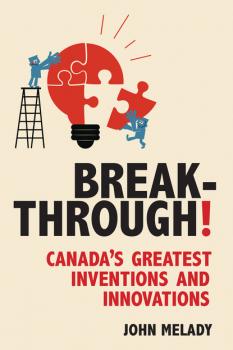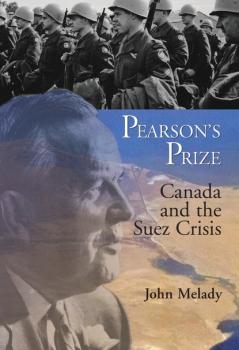ТОП просматриваемых книг сайта:
John Melady
Список книг автора John MeladyАннотация
From the jetliner and the snowmobile to the pacemaker and the BlackBerry, Canadians have long been at the forefront of innovation and invention. Canadians are behind a variety of cutting-edge products, life-saving medicines, innovative machines, and fascinating ideas. Although our inventions have typically been created with little fanfare, financing, or expectation of return, they have often gone on to play important roles in day-to-day life. Our «greatest invention» is probably insulin, which millions of people depend on for life and health. But the light bulb, the Canadarm, and the BlackBerry certainly vie for that honour as well. Some of our inventions are small: the paint roller, the Robertson screwdriver, and the crash position indicator – the forerunner of the black box on planes. Others are larger: the jetliner, the snow-blower, and the snowmobile. Some, such as Standard Time, are really just complex ideas while others, such as the pacemaker, are triumphs of complex technology. Put simply, Canadians are supremely innovative!
Аннотация
Marc Garneau, Roberta Bondar, Julie Payette, Robert Thirsk, Chris Hadfield, and more recently, Guy Laliberté, the founder of Cirque de Soleil, all have one thing in common: they’re some of the very few Canadians who have been in space. The launch of a spaceship is terribly exciting. That’s why thousands of people come to watch. They laugh, cheer, and applaud as the rocket rises. They see the smoke, steam, and white-hot fire as millions of litres of fuel burn in seconds. They feel the chest-thumping impact of the sound. Then they stare upward for a long time until they can no longer see even a tiny speck in the distant sky. By that time, the craft is in space. Canada’s astronauts come from across the nation: from farms, cities, and little towns. They went to large schools and to small ones. Maple Leaf in Space showcases these amazing Canadians who have ventured off our planet and delivers some of the thrill of what that’s like.
Аннотация
They come from the cities and farms, military bases and tourist towns, seaside bungalows and urban apartments. All are ordinary people who did extraordinary things. Not one of them sought recognition, yet all are worthy of our admiration. They are Canada’s heroes, recipients of the presigious Star of Courage, and these are the stories of their bravery. Passionately told by John Melady, the tales of their courage span the nation and beyond: a heart-stopping rescue on the storm-tossed Atlantic, a plane crash on a mountain peak, a robbery and cold-blooded murder on the Saskatchewan prairie and a dramatic rescue at the very brink of Niagara Falls, to name just a few. Whether the quick-thinking seven-year-old who foiled a molester, the quiet young woman who disarmed a killer, or the soldier who became a human shield: these courageous individuals will inspire readers and prove to Canadians that there are great heroes in our midst.
Аннотация
In the fall of 1956, the world was on the brink of war. Egyptian President Gamel Nasser nationalized the Suez Canal, and Britain, France, and Israel attacked him. Russia supported Nasser, and Soviet Premier Khrushchev threatened nuclear holocaust if the United States became militarily involved. Soon, the matter became a major problem for the United Nations. Fortunately, because of the efforts of Lester Pearson, then Canada’s Minister of External Affairs, the crisis was defused. Pearson proposed a U.N. peacekeeping force be sent to Egypt to separate the warring factions there and keep the peace. Because his idea was adopted, Pearson helped save the world from war. For his outstanding statesmanship, Pearson won the Nobel Prize for Peace, the only Canadian ever to do so. This book, written to commemorate the fiftieth anniversary of the event, is about the Suez and about Pearson’s work during a tension-filled time in the twentieth century.
Аннотация
This book is about some of the most dramatic search-and-rescue operations in Canada. Whether the action is on the heaving deck of a sinking ship off the Newfoundland coast, within the incredibly confining walls of a power plant in Ontario, or high on a cliff face on a British Columbia mountain, each of these stories is exciting, memorable, and true. They are accounts of courage, loyalty, perseverance, and sacrifice that knows no bounds. We read of the heartbreaking last days of an Anglican missionary fighting for his life in a lonely Arctic outpost. Another chapter relays a dramatic rooftop rescue in New Brunswick. We meet people who are saved from floods, fires, plane crashes, earth movements, and violent storms. No less are the stories of the sometimes unexpected and tragic losses of the rescuers. Because Canada is so vast, Search and Rescue capability has to span the nation, and extend from sea to sea to sea. No other country has done what we have done. Heartbreak and Heroism is popular history at its most exciting.
Аннотация
A dozen years before the Black Donnellys were butchered at Lucan, Ontario, another murderous rampage took place a few miles away. On June 6, 1868, three men robbed and killed a rich farmer, his wife, and her unborn child. They concocted an alibi, stuck to it, and almost got off. In fact, two of them did. The third, Nicholas Melady, went to prison and fell in love with a beautiful woman in a nearby cell. There to entrap him, she listened, learned, and led him to the gallows. When he was hanged in Goderich, hundreds watched, but thousands were late for the spectacle. They were bitterly disappointed because they had missed the last public hanging in Canada.
Аннотация
In this revised edition, men from the army, navy, and air force are honoured for their bravery in the Korean War. The Korean War (1950-53) forms a little-known but exciting part of Canada’s military history. The heroism and sacrifice of Canadians who fought in this conflict as part of the United Nations force has often been ignored. In this lively, anecdotal book, John Melady combines archival material and interviews with many Korean veterans. The result is a vivid, intensely human account of the war from its first days, to heroic battles such as Kapyong, to fascinating and more obscure incidents such as the Koje prison camp insurrection, as well as personal stories of doctors, POWs, and journalists who witnessed the conflict, including Pierre Berton and Rene Levesque. The men from across Canada who served and fought were forever changed by what they saw and experienced in this faraway land. Army, navy, air force all receive their share of long-overdue praise in this important book, which was originally published in 1983 but is now fully revised.







